A Guide to Jellyfish Species in South Carolina
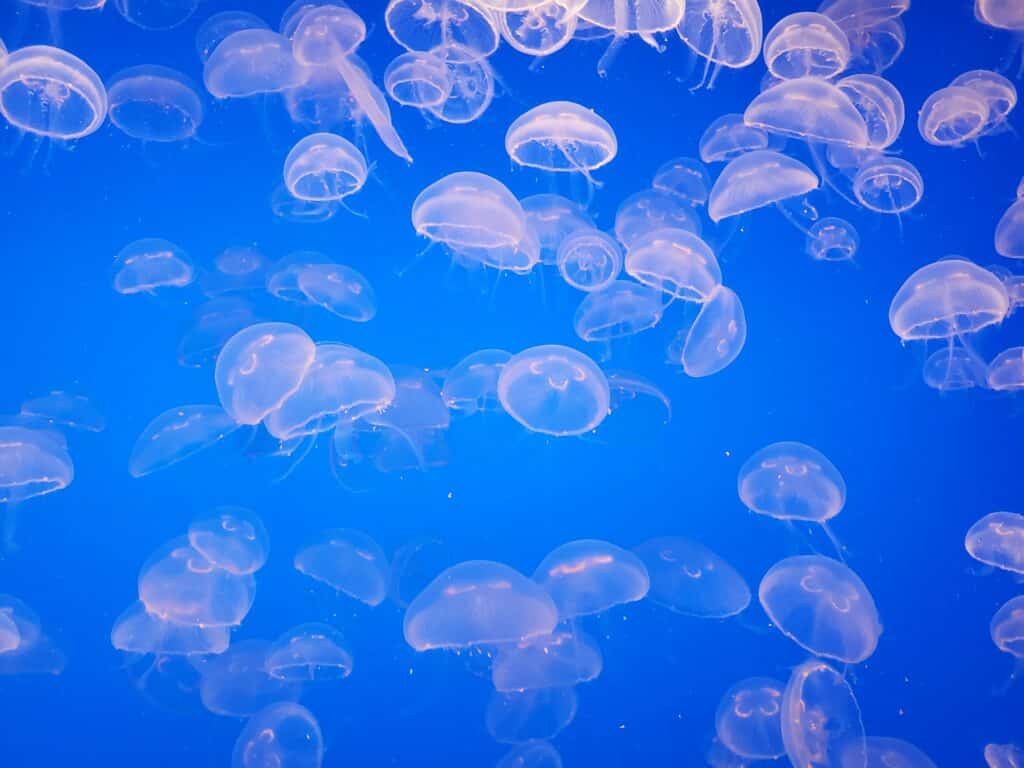
Our home state, South Carolina is known for its picturesque coastline and stunning beaches like Folly Beach, Myrtle Beach, and Hilton Head Island. This makes it a popular destination for beach lovers and boating enthusiasts alike, which means you might be on the beach or on a boat while reading this — perhaps having just encountered a jellyfish.
With miles of sandy (and pluff-muddy) shores and warm, inviting waters, it’s no surprise that people flock to this beautiful state to enjoy the sun, surf, and sea. However, amidst the beauty and fun, there’s always the possibility of encountering one of the ocean’s more intriguing inhabitants: the jellyfish.
While most jellyfish species in South Carolina waters are harmless, there are a few that require caution when encountered.
It can be useful for locals and visitors alike to learn how to identify the different jellyfish species that can be found in the area, to ensure safety while boating or beaching. And, of course, out of pure curiousity.
In this guide, we will explore the various jellyfish species that can be found in South Carolina’s coastal waters. With this knowledge in hand, you’ll be better prepared to enjoy South Carolina’s beaches and waterways while steering clear of any jellyfish-related hazards.
South Carolina Jellyfish
Cannonball Jelly (Stomolophus meleagris)

The Cannonball Jelly is the most prevalent species in South Carolina, with a distinct white, round bell bordered by a brown or purple band. Despite their abundance, they pose little threat to humans as they are minimally venomous. These are the ones that you are most likely to see washed up on the beach, and yes, it’s safe to touch them.
Lion’s Mane (Cyanea capillata)
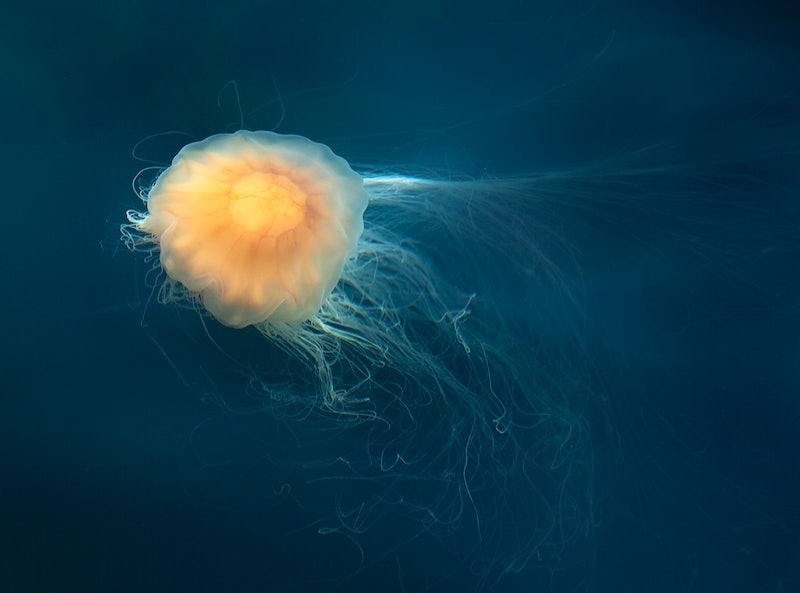
Also called the winter jelly, Lion’s Mane jellyfish have a reddish-brown saucer-shaped bell with long tentacles. Their stings produce mild to moderate burning sensations, making them relatively low-risk for humans, although still one to avoid.
Mushroom Jelly (Rhopilema verrilli)
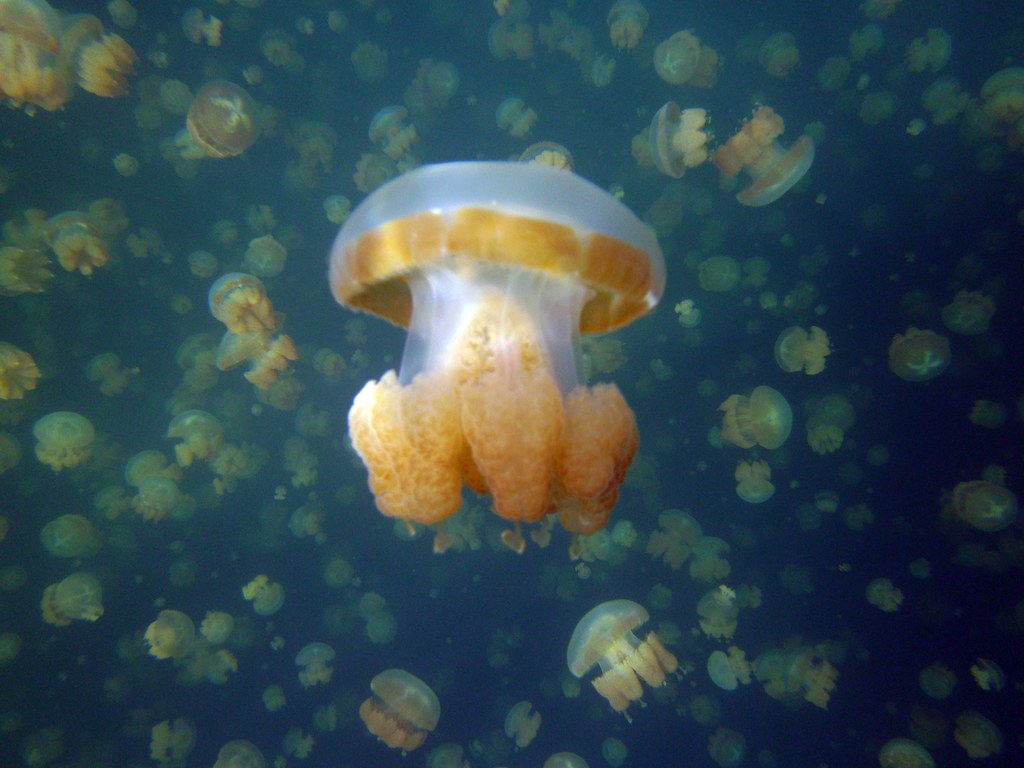
This jellyfish is similar in appearance to the Cannonball Jelly but is larger, flatter and lacks the brown band of its relative. They have no tentacles and are harmless to humans.
Southern Moon Jelly (Aurelia marginalis)

Infrequently seen in South Carolina waters, the Moon Jelly is characterized by its transparent saucer-shaped bell and four pink “horseshoes.” Their sting produces mild discomfort, typically limited to the area of contact.
Sea Nettle (Chrysaora quinquecirrha)
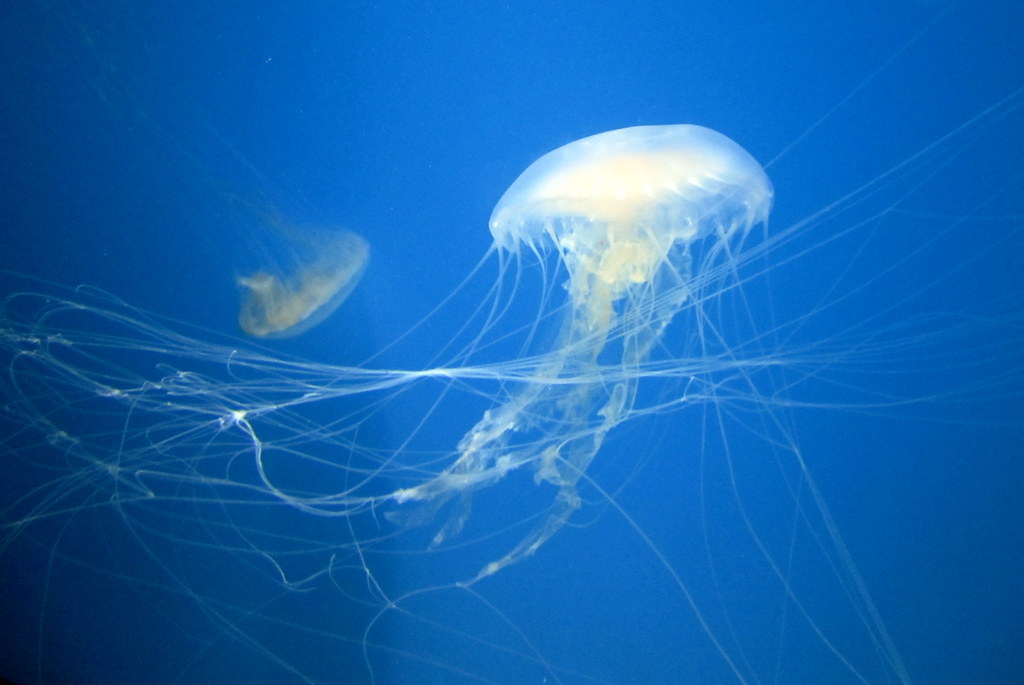
These brown or red jellyfish are responsible for most stings in South Carolina waters. Sea Nettle stings range from moderate to severe, causing symptoms similar to the Lion’s Mane but more intense. Just looking at the picture you can tell that this is one to stay away from.
Sea Wasp (Chiropsalmus quadrumanus)
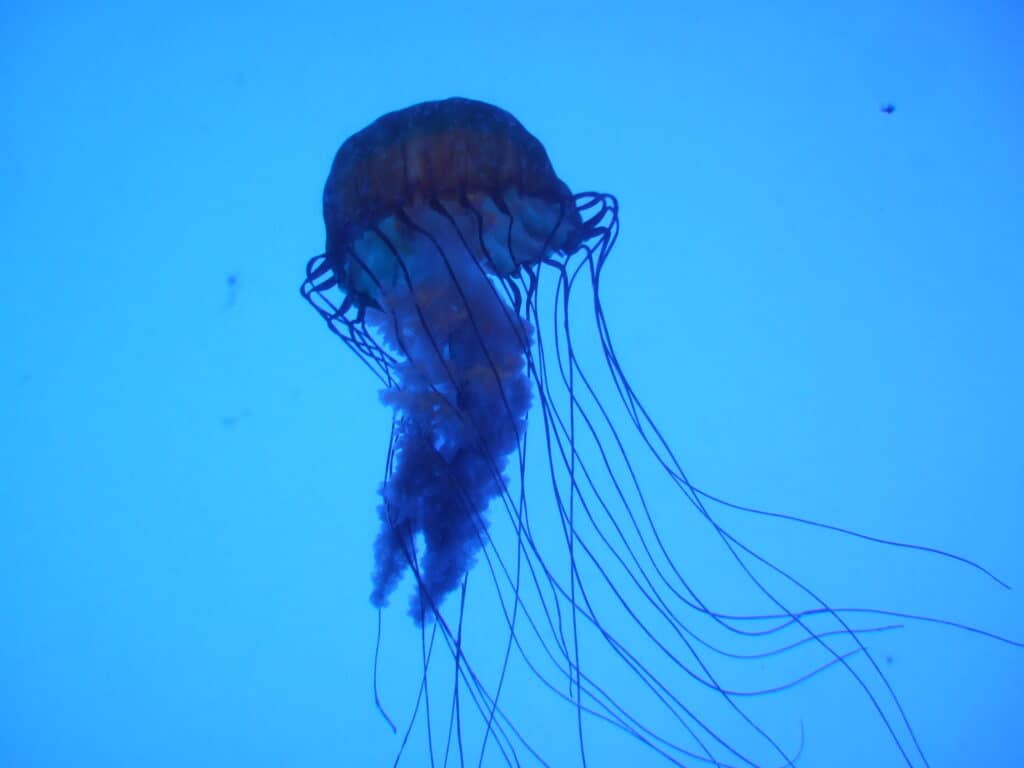
Known for its cube-shaped bell, the Sea Wasp is the most venomous jellyfish found in South Carolina. Their powerful sting can cause severe skin irritation and may necessitate hospitalization.
Portuguese Man-of-War (Physalia physalis)
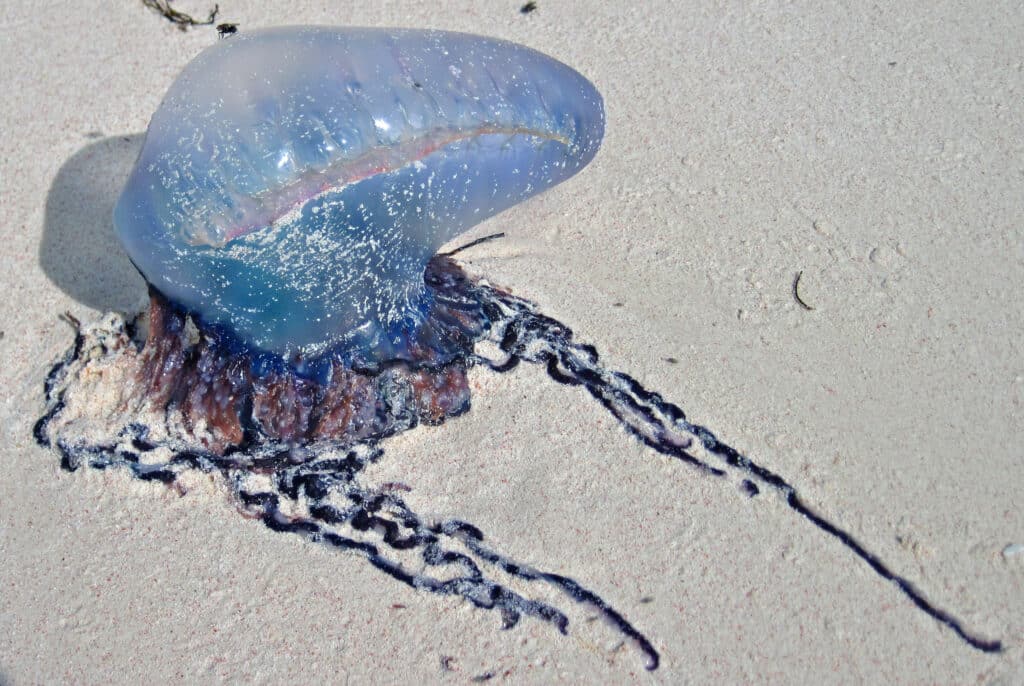
Though not a true jellyfish, the Portuguese Man-of-War is a highly venomous relative often found in South Carolina waters. Its blue, gas-filled float and long tentacles can deliver extremely painful stings with serious symptoms, including shock and severe muscle pain.
By-the-Wind Sailor (Velella velella)

The By-the-Wind Sailor is a smaller jellyfish with a distinctive blue bladder, and is occasionally found in South Carolina waters. Though it only causes a mild, tingling sting, it resembles the dangerous Portuguese Man-of-War. To stay safe, it’s best to treat all jellyfish with a blue float as potentially harmful when in South Carolina coastal waters.
What to Do If Stung by a Jellyfish
- Stay calm and assess the sting area: Remove yourself from the water and carefully examine the affected area. Avoid touching it with your bare hands, as this may cause additional stinging or irritation.
- Don’t fall for the urine myth: Contrary to popular belief, urinating on a jellyfish sting can actually make the situation worse by causing more nematocysts (stinging cells) to release their venom.
- Rinse with vinegar: Use vinegar to neutralize the venom and remove any tentacle fragments from the sting area.
- Immerse in hot water: Soak the affected area in hot water (as hot as the person can tolerate) for 20 to 45 minutes to help reduce pain and inflammation.
- Seek medical attention if necessary: If the pain persists or the sting appears severe, consult a healthcare professional. Some jellyfish stings, such as those from the Sea Wasp or Portuguese Man-of-War, can cause serious symptoms and may require professional medical treatment.
Remember that proper first aid and care are crucial for a swift recovery from a jellyfish sting. Always err on the side of caution when dealing with these fascinating but potentially dangerous marine creatures. However, it can also be fun to poke the ones that don’t sting, or throw them at your friends. Overall, use caution, and have fun!